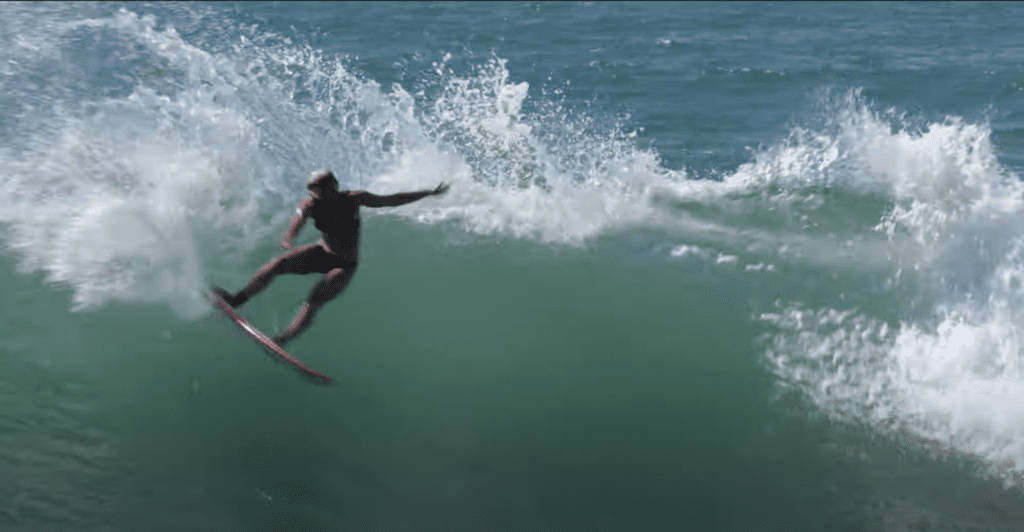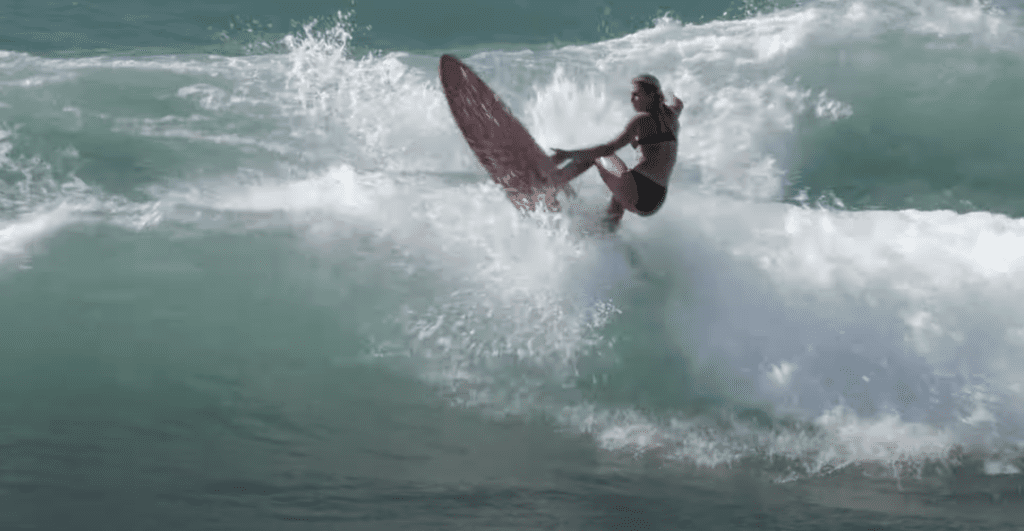Are High Performance Surfboards Unisex?
We asked someone who’s shaped prodigiously for both genders, Britt Merrick.
Four words that I never thought would be contentious are: “surfboards are mostly unisex.”
But some commenters on my last piece wanted to know more. They referenced an interview with Matt Biolos on Surfer Mag about shaping women’s boards. But even that interview (from 2015), where Biolos says that Carissa Moore and Kolohe Andino ride “practically identical boards,” does not give a decisive answer to the question: are high performance surfboards unisex?
It personally never crossed my mind to seek out a “women’s” board before I saw those comments. Steph Gilmore just asks Darren Handley for “what Mick rides” in her size and claims “there’s no such thing as a bad surfboard, you just have to know how to ride it.” Biolos was the only expert opinion on the subject I could find, and most other women’s content and advice is tailored to beginners.
So, when Channel Islands put out a video of CT surfer Sage Erickson ripping on three drastically different shapes in Mexico (see above), it was the perfect opportunity for me to ask Britt Merrick what he thinks. I also couldn’t help myself and threw in some questions about the explosion of alternative surfboard shapes, bad boards vs. bad surfers, and sustainability in the shaping bay.

Stab: Do you help your riders pick their quiver for a surf trip?
Britt Merrick: Yeah, I do. That’s a big part of what a shaper does—help a surfer think through what boards they’re going to need or want on a trip. But some surfers are pretty settled with that, and they’ve kinda got their head wrapped around it. For other surfers it’s a lot more of a dialogue and a process. Sage works really closely with our team manager Nathan. They’ve been buddies for years, so he’s really helpful with her boards as well.
Sage brought the CI Mid, Rocket Wide, and OG Flyer to Mexico. Why these boards?
I think that she just wanted to have fun. The idea with that trip was just taking some time off with friends, having fun, and enjoying some playful surf. CT surfers are so tuned into the high-performance surfboards, a lot of them refuse to ride anything else. But Sage is a lot more open-minded than most CTers. She’s pretty stoked to feel different things and get cruisy.
What materials were the boards that she was riding?
I’m pretty sure they were all PU/PE.
Is that your preference as a shaper?
You know, that’s definitely the majority of our boards, but Sage really likes an epoxy in California summertime surf. When she won the US Open last year, she was riding an epoxy with a wood stringer. So she’s pretty quick to go to the epoxy, but generally her boards would be 90% PU/PE.

What changes did you make to Sage’s boards in relation to their stock dims?
In general for Sage, and I think for a lot of female surfers, there are a few things that I think about. I want to make the board more forgiving up front. So I’ll make the rails a lot softer on the bottom in the forward area. That’s true for Sage, that’s true for Lakey, and that’s true for Nikki.
I also try to give them plenty of lift under the back foot, so sometimes for girls I’ll increase the double concave and thicken up the tail. And Sage likes a little wider tail block compared to Lakey and Nikki. She likes a little more lift in the back of the board. And then I like to keep the rails down for the girls, so there’s less resistance in the transitions.
Very interesting. What criteria do you base that adjustment on? Is it about the weight or the style of surfing, or something else entirely?
If you’re comparing a male CT surfer to a female CT surfer, I think that it’s mainly about strength. They’re usually going to be riding the same rockers and pretty similar volumes, but in general a male surfer’s going to have little more body strength. So you’re tuning in some stuff for the women to be a bit more finessed. Does that make sense? I’m not going to get in trouble for saying that, am I? [laughs]
No, no, not at all, I’m just curious. You know, it’s not really discussed much to be honest. So, do you think there’s such a thing as a bad surfboard or just bad surfers?
Oh there’s super bad surfboards, [laughs] for sure.
What makes it bad?
Oh man, listen, coming from someone who’s made a lot of really bad surfboards, I will tell you that the difference between a bad board and a good board is night and day. You might not know it until you get a really good board. But a really good board is going to allow you to go wherever you want to go in your mind on that instant on the wave. It’s going to feel like it’s attached to your feet. It’s going to feel like it’s right under you. You’re going to find yourself falling way less, working way less hard. The difference between a bad board and a good board is for real.
Now, I do think there’s value in taking any board and figuring out how to make it work. I had to do a lot of that as a developing shaper because the first—I don’t know—lots of boards all sucked. But I was committed to riding it, so I figured out how to make it work. I think a lot of people do that, and that’s ok. But yeah, anyway, there are definitely bad boards [laughs].

But is there any particular physical attribute you can chalk it up to when it’s bad? Like the rocker’s off, the concave is whatever, or is it just the overall feel and you have to know it once you ride it?
Well the cool thing about surfboards is everything works together, right? The rocker, the contours, the rail profile, and all of that stuff works together to make a really good board.
But the most important thing on the surfboard is the rocker. Period. That’s the single most important thing. That’s the most hydrodynamically engaged part of the board, dictating what the board is doing on the water more than any other factor. A good rocker is pure gold. That’s the single most important factor. That’s where I spend 95% of my mental energy on the surfboard: the rocker.
How do you feel about this explosion of alternative surfboards?
I think it’s great. There’s always something to be learned from riding different boards. There’s definitely a lot of value in having the right board on the right day–that’s huge. I think people should have big quivers honestly, because the goal is to stay in the water. We’re all happier and healthier when we’re surfing, so if you have a board that can make crappy waves fun, then that’s such an asset. But then when you get a really good day, you need a board that’s tuned into that.
So I think the alternative thing is cool because we’re feeling different things and drawing different lines. But even alternative boards should still be good boards.

My last question is about sustainability. Surfers want to preserve the environment for obvious reasons, but then we also want to buy surfboards, which create toxic byproducts. Do you have any comments on that?
Yeah, making surfboards is not a super environmentally friendly thing, and we’re all working on that. There’s a lot of people working on different materials. We’re experimenting with those all the time. And we’re really committed at Channel Islands to having clean processes. Our factory is as environmentally friendly as possible, as far as disposal and reusing stuff and removing particles from the air goes. So we do everything that we can, but until someone really smart comes up with better materials, it kind of is what it is.
Is there anything else you want to say about Sage’s boards, or that edit, or women’s surf in general?
My favorite thing in the world right now about women’s surfing—actually about surfing in general—is when I go to my local beach there are tons of young girls in the water. My daughter is six years old, and all of her friends are out there surfing every day. I can honestly say that’s my favorite thing about surfing right now—a bunch of young girls surfing in my hometown. I love it.





Comments
Comments are a Stab Premium feature. Gotta join to talk shop.
Already a member? Sign In
Want to join? Sign Up